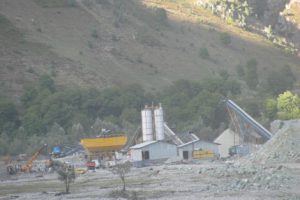China plans to increase its share of non-fossil energy to 11.4% of total energy consumption through an additional 160 gigawatts of installed hydropower capacity by 2015, along with ambitious expansions in renewables and nuclear.
By 2020, China plans to have 430 gigawatts of installed hydropower capacity, more than Europe and the United States combined.
A bilingual interactive map published by the Wilson Center’s China Environment Forum illustrates the scale – and potential costs – of China’s hydropower plans. It highlights more than 90 major dams (22 in operation, 48 planned and 23 under construction) that overlap with areas that Conservation International has identified as biodiversity hotspots.
Figure 1: Hover cursor over image to reveal more information about dam projects. If you cannot see the map you can also view it on the Wilson Center website
In southwestern China, three parallel rivers – the Nu, Lancang and Jinsha (also known as the Upper Mekong, Salween and Yangtze, respectively) – form a series of corridors that connect the tropical rainforests of Southeast Asia to the Tibetan Plateau. These areas are some of the most biodiverse in the world, and scientists argue they have value as “climate refugia” – places worth preserving in order to allow species to retreat to cooler, more suitable climates as temperatures rise. A cascade of dams, however, has been planned for the region, threatening to submerge habitats, reduce the flow of tributary rivers and make the area less suitable for many plant and animal species.
But many of the existing and planned dams, and those under construction, lack comprehensive environmental and social impact assessments. Chinese dam developers have also often failed to respond to concerns over the impacts in other Southeast Asian countries, limiting or sometimes outright refusing to share data on water and sediment flow.
In December 2013, a group of Chinese environmental NGOs released a comprehensive assessment of the damage done to China’s rivers by hydropower development. They called for river protection legislation to set ecological “red lines” and promotion of other forms of renewable energy.
How China balances hydropower development and ecological protection in the coming years will have far-reaching consequences for the wellbeing of China and mainland Southeast Asia.



